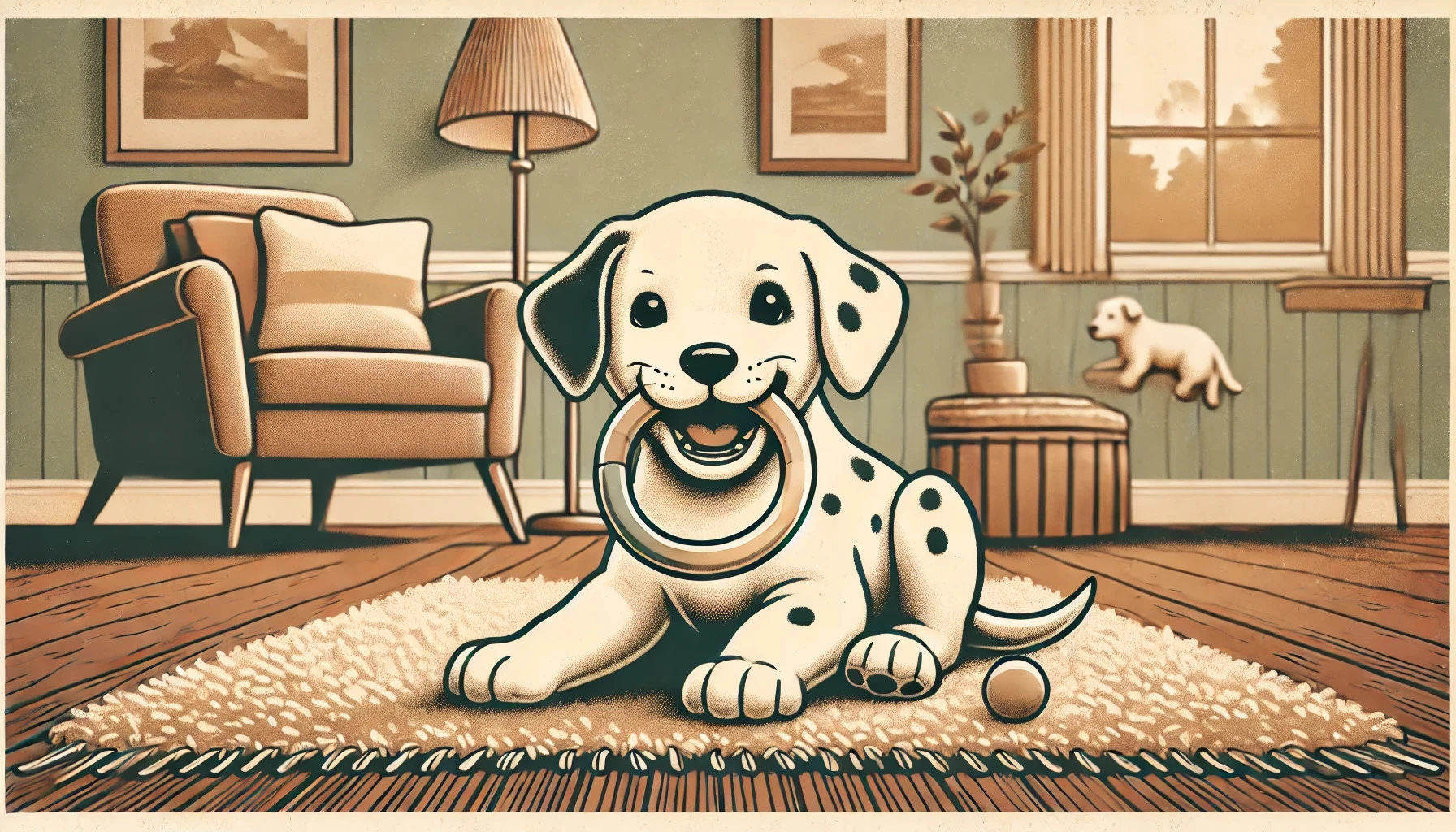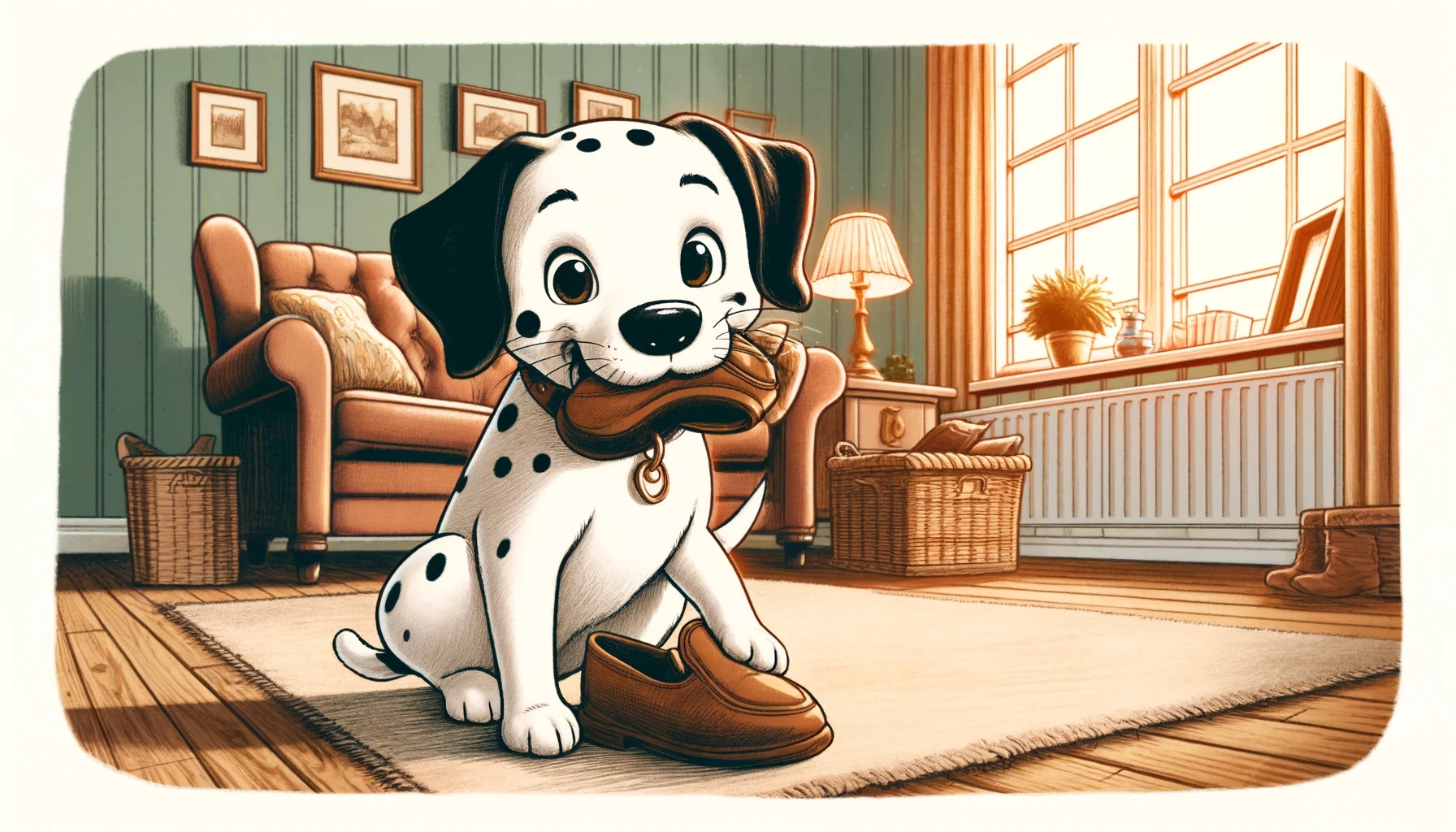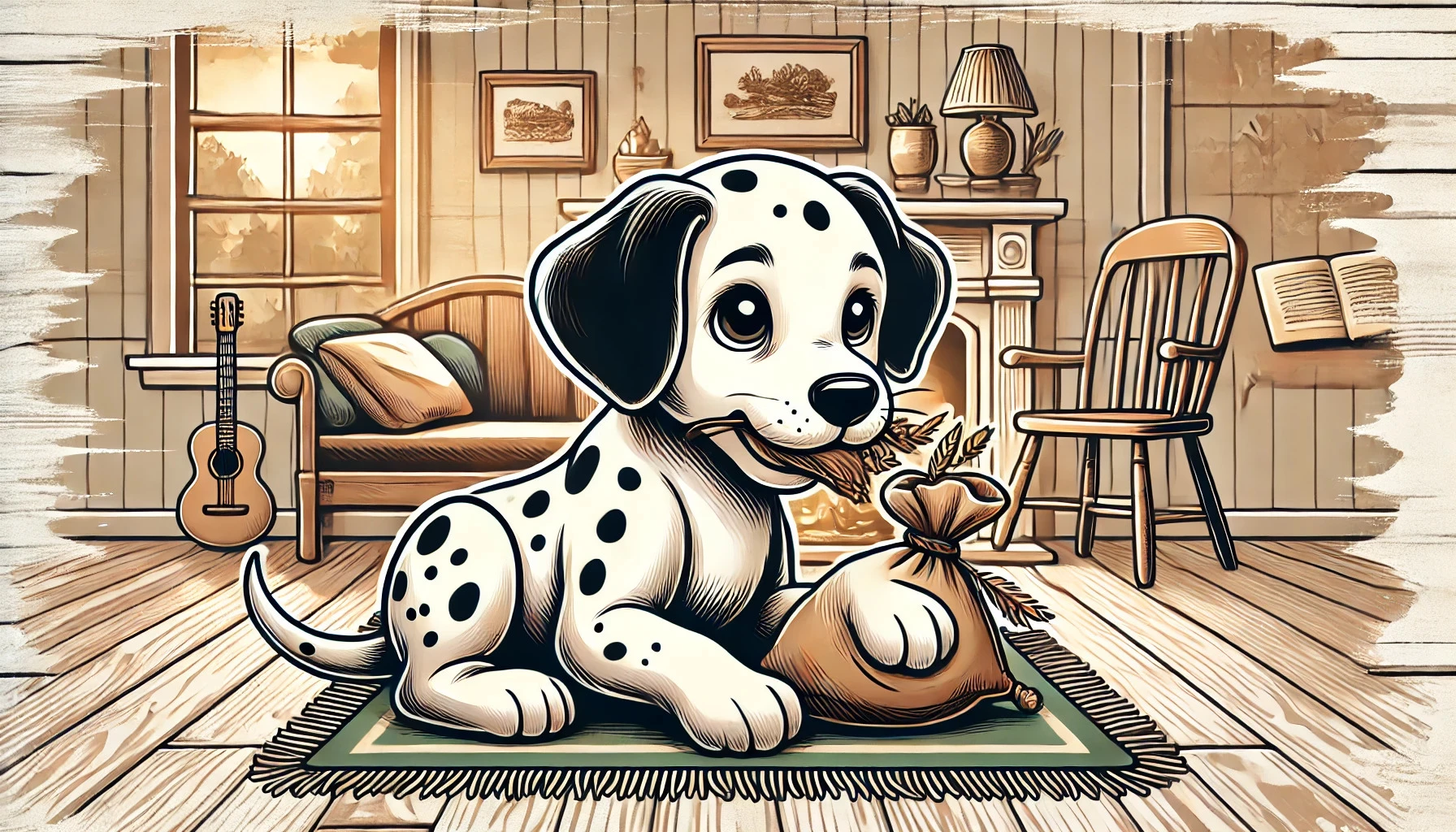On this page
Is Chewing Normal for a 10-Month-Old Dalmatian?
Yes, chewing is entirely normal behavior for a 10-month-old Dalmatian. At this age, your Dalmatian is likely teething, exploring, or expressing their energy. Known for their boundless energy and playful nature, Dalmatians often engage in chewing to alleviate discomfort or boredom.
During this stage, their dietary needs are also evolving. Ensuring a well-balanced diet with the right nutrients supports healthy teeth, gums, and overall development. Chewing, while natural, can become a problem if it targets furniture or personal belongings. Understanding the causes can help you address the behavior effectively.
Dealing with chewing issues? Get expert guidance on Dosty App.
Could Teething Be the Cause of Chewing in Your Dalmatian?
Yes, teething is a primary reason for chewing in young Dalmatians.
Why Does Teething Lead to Chewing?
Relieves Discomfort: Chewing helps soothe sore gums.
Encourages Strong Teeth: Puppies chew to strengthen developing teeth.
Exploration: Dalmatians use their mouths to explore new objects.
Dr. Amanda Smith, a veterinarian, explains, “Teething is a natural phase for puppies, but providing appropriate chew toys is crucial to prevent damage to household items.”
Solutions for Teething Puppies:
Offer durable, non-toxic chew toys.
Freeze a wet washcloth for a cooling effect on their gums.
Avoid giving items that resemble household objects, such as old shoes.
For more tips visit our page Dosty.co.

Is Your Dalmatian Chewing Out of Boredom?
Yes, boredom is another common cause of destructive chewing in young Dalmatians.
Why Does Boredom Lead to Chewing?
Excess Energy: Without proper outlets, Dalmatians may resort to chewing to burn energy.
Mental Stimulation: Chewing can provide entertainment in the absence of other stimuli.
Attention-Seeking: Some dogs chew to gain attention, even if it’s negative.
Dr. Laura Green states, “Active breeds like Dalmatians require daily exercise and mental challenges to prevent boredom-related behaviors.”
Activities to Keep Your Dalmatian Engaged:
Interactive toys or puzzle feeders.
Regular playtime or fetch sessions.
Training exercises to channel energy into learning.
Could Chewing Be a Sign of Anxiety in Your Dalmatian?
Yes, anxiety can manifest as destructive chewing in Dalmatians.
Signs of Anxiety-Driven Chewing:
Frequent Chewing When Alone: Indicates separation anxiety.
Excessive Licking or Barking: May accompany chewing as a stress response.
Destruction of Specific Items: Often belongings with your scent, like shoes or pillows.
Dr. Eric Norton explains, “Chewing can be a coping mechanism for anxious dogs. Addressing the root cause of anxiety is key.”
How to Reduce Anxiety in Dalmatians:
Create a safe, comforting space with familiar items.
Use calming aids, such as anxiety wraps or pheromone diffusers.
Gradually desensitize your dog to being alone.

Is Your Dalmatian Chewing Due to Nutritional Deficiencies?
Yes, nutritional imbalances can sometimes drive chewing behavior.
How Diet Impacts Chewing:
Mineral Deficiencies: Dogs may chew on unusual items like rocks or dirt to seek missing nutrients.
Inadequate Calories: A hungry Dalmatian might chew to find food.
Improper Chewable Food Options: Lack of appropriate textures in their diet can lead to destructive chewing.
Dr. Michael Hayes notes, “Providing a well-rounded diet not only supports health but also minimizes behaviors linked to dietary deficiencies.”
Tips for a Balanced Diet:
Opt for high-quality dog food rich in protein and essential nutrients.
Include chew-friendly treats like dental sticks.
Avoid table scraps that can lead to poor nutritional habits.
Could Lack of Training Be the Reason for Your Dalmatian?
Yes, a lack of training or clear boundaries can result in unwanted chewing.
Why Training Matters:
Sets Expectations: Dalmatians need to understand what’s acceptable to chew.
Provides Structure: Proper training reduces confusion and misbehavior.
Strengthens Your Bond: Training builds trust and communication.
Trainer Sarah Brooks emphasizes, “Start early with positive reinforcement to teach your Dalmatian which items are off-limits.”
Training Techniques:
Redirect chewing to appropriate toys.
Use commands like “Leave it” or “Drop it.”
Reward positive behavior with praise or treats.
Get expert training tips for your Dalmatian on Dosty App.

Conclusion: Address Chewing Behavior in Your Dalmatian with Patience and Care.
Chewing in a 10-month-old Dalmatian is a normal behavior, often linked to teething, boredom, anxiety, or lack of training. By understanding the root cause and taking proactive steps, you can guide your Dalmatian toward better habits.
Turn your Dalmatian’s chewing habits around with Dosty App expert advice.

